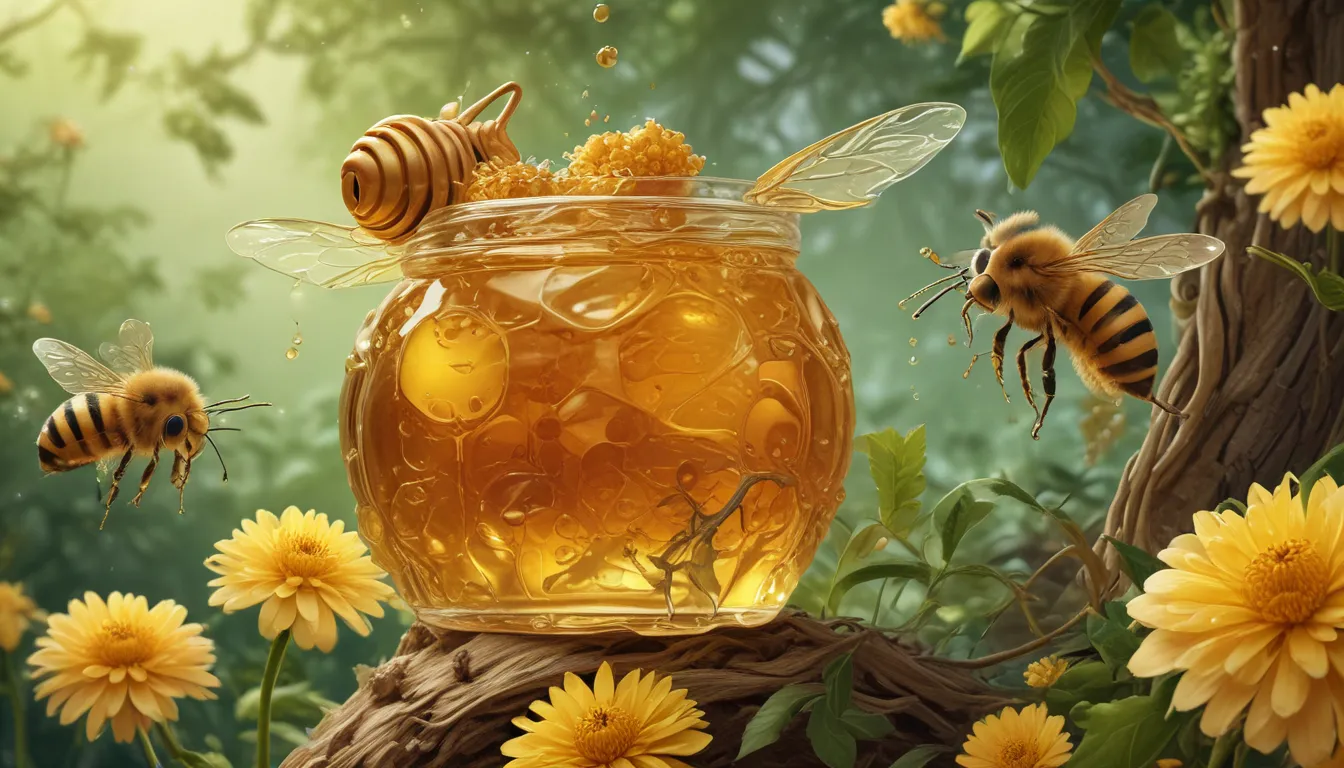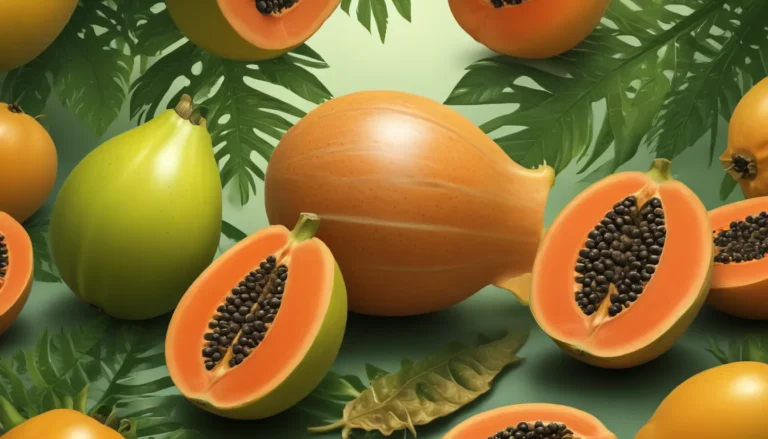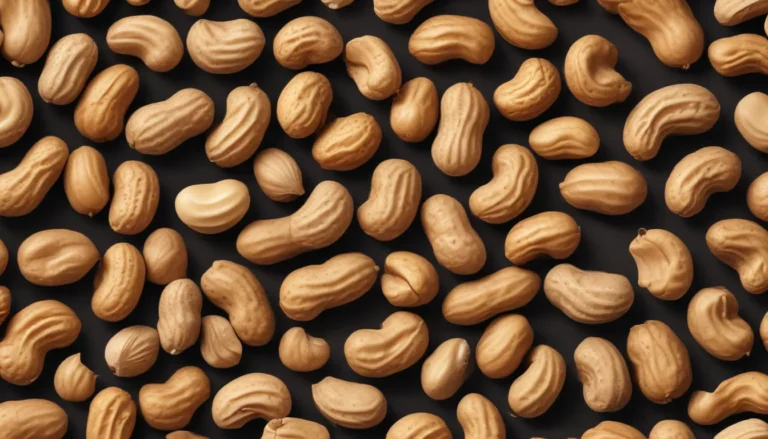The pictures in our articles might not always show exactly what the text is talking about. We use these images to make the article more interesting and eye-catching. They are there to add to the text, but not to replace it or show every detail.
Welcome to the fascinating world of honey, where bees work tirelessly to create a delectable treat that has enchanted humans for centuries. From its humble origins as a winter food source for bees to its valued place on our dining tables, honey is truly a remarkable product of nature. Join us on a journey of sweet exploration as we uncover the captivating world of honey with these enlightening honey facts.
The Sweet Secret of Bees: Honey as Winter Nourishment
One of the most intriguing honey facts is the vital role honey plays in the survival of bees during the winter months. Bees diligently collect nectar from flowers, which they transform into honey to store in their hives. When the cold season arrives and flowers become scarce, bees rely on this stored honey as their primary food source. The intricate process of honey production begins with bees collecting nectar, which is then partially digested by hive bees and stored in honeycombs. To prevent fermentation, bees use their body heat to evaporate excess water, resulting in the thick, viscous honey we know and love. Truly, honey is not just a sweet treat; it is a lifeline for the diligent bees that create it.
Beyond Nectar: The Diverse Origins of Honey
While nectar is the primary source of honey for bees, they can also produce honey from other sources, such as honeydew. This sweet substance, derived from secretions of sap-eating insects, creates a distinct type of honey with a unique flavor profile. In regions like Northern California, the Black Forest in Germany, and Tara in Serbia, bees gather honeydew to craft dark, fragrant honey with a fruit-like aroma. Though honeydew honey is prized for its rich taste, bees must be supplemented with additional protein sources as honeydew lacks the nutritional benefits of flower nectar. Despite its differences, honeydew honey showcases the diverse and adaptable nature of bee-produced honey.
The Kaleidoscope of Honey: Exploring Colorful Varieties
While golden and amber hues are commonly associated with honey, this versatile substance can also display an array of unexpected colors. In northeastern France, beekeepers were surprised to find honeybees producing green and blue honey, a result of collecting sugars from residues in an M&M's candy factory. This unforeseen phenomenon highlights the unique adaptability of bees and their ability to create colorful honey based on environmental factors. From traditional amber tones to vibrant greens and blues, the spectrum of honey colors showcases the endless surprises nature has in store.
Uncovering the Enigmatic “Mad Honey”
Amidst the array of honey varieties lies a mysterious type known as "mad honey," possessing potent psychoactive effects. Originating from rhododendron flowers, who harbor a neurotoxin called grayanotoxin, this honey can induce hallucinations, paralysis, and slowed heart rhythms in those who consume it. With a dark reddish hue and bitter taste, mad honey has an intriguing history dating back to ancient times. From Athenian philosophers to Roman soldiers, the captivating allure of mad honey has left a mark on human history, serving as a cautionary tale of nature's hidden dangers.
Buzzing with Activity: The Laborious Creation of Honey
The humble jar of honey on your kitchen shelf represents a laborious collaboration between bees and beekeepers. An individual worker bee toils tirelessly to produce a mere 1/12 teaspoon of honey in its lifetime, requiring visits to approximately 2 million flowers to produce just one pound of honey. With tens of thousands of bees working in harmony within a hive, the process of honey-making showcases the remarkable efficiency and dedication of these industrious insects. Beekeepers, in turn, uphold ethical practices by safeguarding bees' welfare, allowing them to maintain a delicate balance between harvesting honey and ensuring bees’ survival.
In Defense of Honey: Nature’s Resilient Antibiotic
Beyond its culinary appeal, honey possesses remarkable antibiotic properties that contribute to its long-lasting shelf life. With low water content, acidic pH levels, and unique compounds such as gluconic acid and hydrogen peroxide, honey creates a hostile environment for microorganisms, preventing spoilage and decay. This natural defense mechanism of honey highlights its multifaceted benefits, from soothing skin conditions to supporting overall health. As the world grapples with antibiotic resistance, honey emerges as a promising natural alternative, offering a beacon of hope in the fight against bacterial infections.
A Sweet Symphony: The Art and Science of Making Mead
Mead, an ancient fermented beverage derived from honey, offers a glimpse into humanity's timeless tradition of brewing. By fermenting honey with water and optional ingredients like grains, hops, or fruits, mead artisans create a diverse range of flavors and alcohol content. This harmonious blend of honey and fermentation yields a delightful elixir enjoyed by cultures worldwide. Whether known as honey-wine or mead, this ancient concoction represents a fusion of artistry and science, embodying the eternal appeal of honey as a culinary cornerstone.
The Rich Tapestry of Honey Production: A Global Perspective
From the bustling apiaries of China to the verdant beekeeping havens of the United States, honey production paints a vibrant picture of worldwide honey cultivation. In 2018 alone, beekeepers collectively harvested over 1.9 million metric tons of honey, with China leading the charge as the top producer. Across diverse landscapes and climates, bees tirelessly gather nectar to craft honey of unparalleled quality, reflecting the rich tapestry of global honey production. As beekeepers and bees work in harmony, each jar of honey represents a collaborative effort between humans and nature, sustaining a timeless tradition through generations.
As we delve into the captivating world of honey, we uncover a treasure trove of knowledge that spans centuries of history and innovation. From its humble origins as a winter reserve for bees to its transformation into a beloved culinary staple, honey stands as a testament to the enduring partnership between humans and nature. With each dollop of golden sweetness, we savor the remarkable journey of honey, distilled into a jar filled with nature’s golden nectar. Join us on this enchanting exploration of honey's wonders, where each dip of the spoon reveals a story of resilience, creativity, and the timeless bond between bees and humans.






